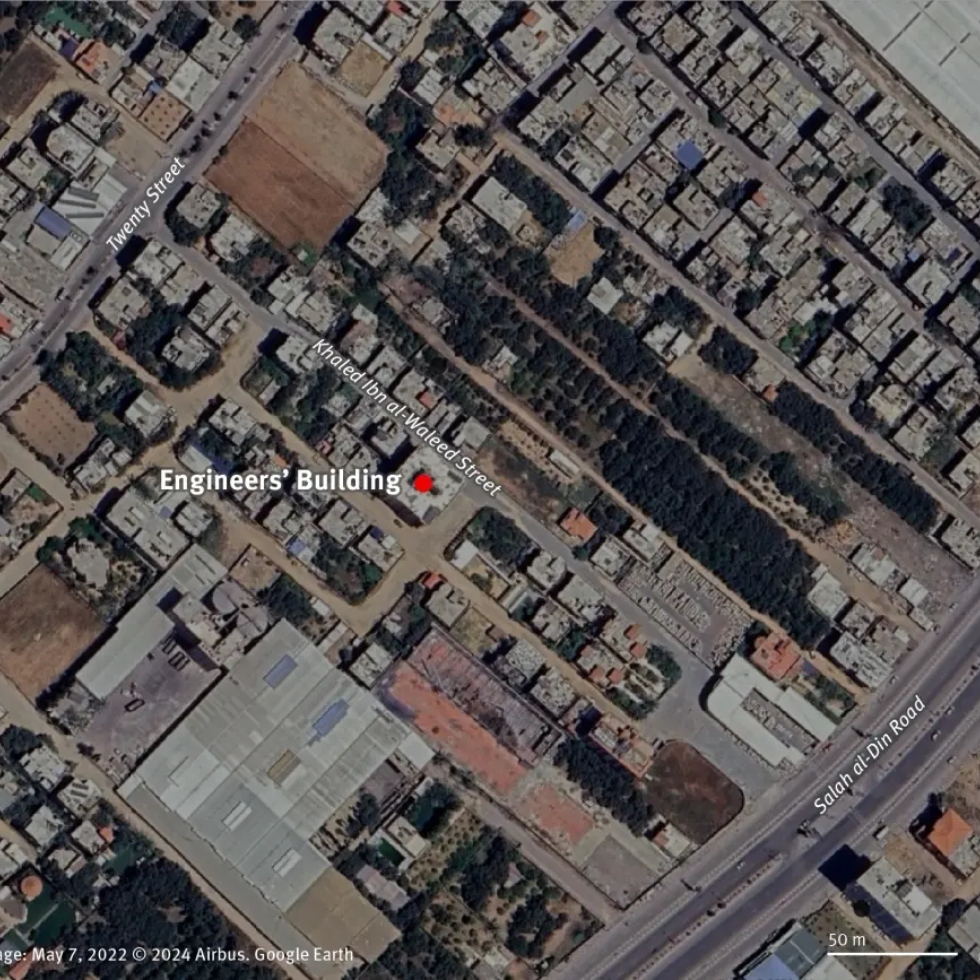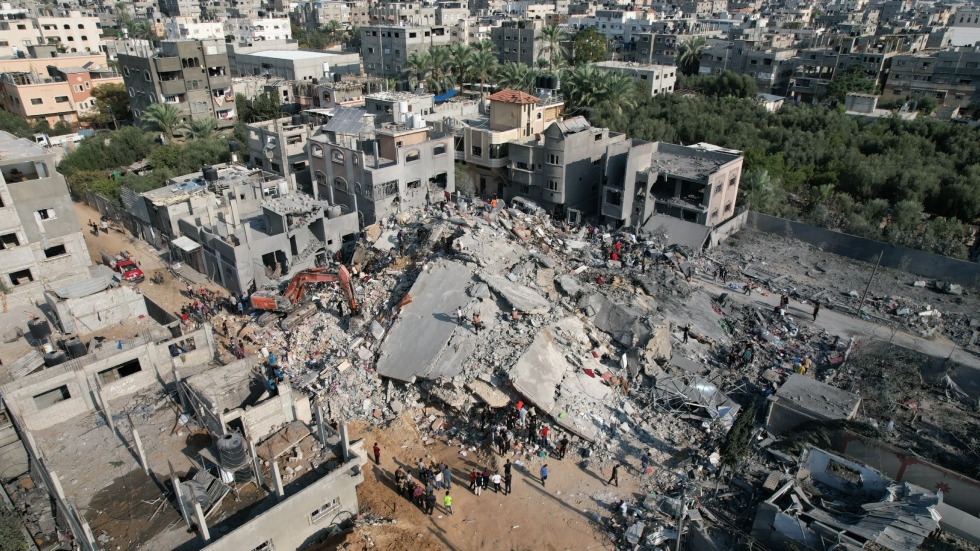A deadly Israeli airstrike on a six-story apartment block early in the Gaza war likely constituted a war crime, rights group Human Rights Watch (HRW) has reported, citing interviews with witnesses, satellite imagery and photo and video evidence. More than 100 noncombatants were killed in the bombing – over half of them children.
The October 31 strike targeted a residential complex known as the ‘Engineers’ Building’ in central Gaza, situated along the Salah al-Din highway bisecting the territory. According to witnesses of the attack, the Israeli air raid came “without warning,” with at least four munitions hitting the building in a matter of seconds, leaving it “completely demolished.”
“Human Rights Watch found no evidence of a military target in the vicinity of the building at the time of the Israeli attack, making the strike unlawfully indiscriminate under the laws of war. Israeli authorities have provided no justification for the attack,” the humanitarian org said in a detailed press release published on Thursday.
At least 106 civilians were killed in the strike, including 54 children. Many of those residing in the building had fled violence elsewhere in Gaza amid a months-long onslaught by Israeli forces. HRW later confirmed the identities of 106 victims, though local emergency crews suggested the death toll may have exceeded 140.

Recounting the incident, two witnesses said their two children and a nephew were playing football outside during the air raid, but they were unable to save them.
“The back of his head was cracked open, one of his legs seemed barely connected to his body and part of his face was burned, but he seemed to be alive. We freed him in seconds, but he died in the ambulance. We buried him the same day,” one of the men said of his 11-year-old son, who was found buried under rubble.
All three boys were killed in the bombing.
To date, the Israeli government has offered no public comment on the attack, and has declined to respond to questions.
Based on satellite imagery, 35 photos and dozens of videos depicting the aftermath of the attack, as well as interviews with 16 witnesses and relatives of those killed, HRW concluded the Halloween strike likely violated the laws of war.
“The absence of a military objective would render the attack on the Engineers’ Building unlawfully deliberate or indiscriminate,” the group said. “Even the presence of a valid military target would raise issues about the attack being disproportionate, given the visible and expected presence of large numbers of civilians in and around the building.”
The October 31 bombing is merely one among hundreds of similar strikes on large civilian structures in Gaza – dubbed “power targets” by Israel’s military, which reportedly aims to inflict “civil pressure” on Palestinian society, a practice barred under international law as a form of collective punishment.
More than 33,000 people have been killed since Israel launched its war on Gaza last October, most of them women and children, according to local health officials. Thousands more are thought to be trapped under rubble, as Israeli strikes have flattened much of the territory, leaving more than 1 million displaced.
HRW went on to urge foreign governments to “suspend arms transfers to Israel,” to back international investigations into Israel’s conduct and to “impose targeted sanctions on officials responsible for laws-of-war violations.”
































